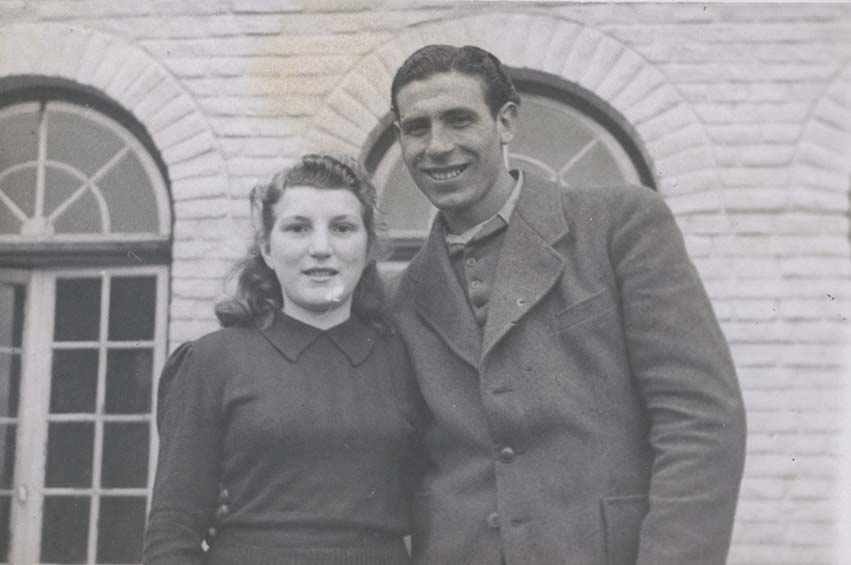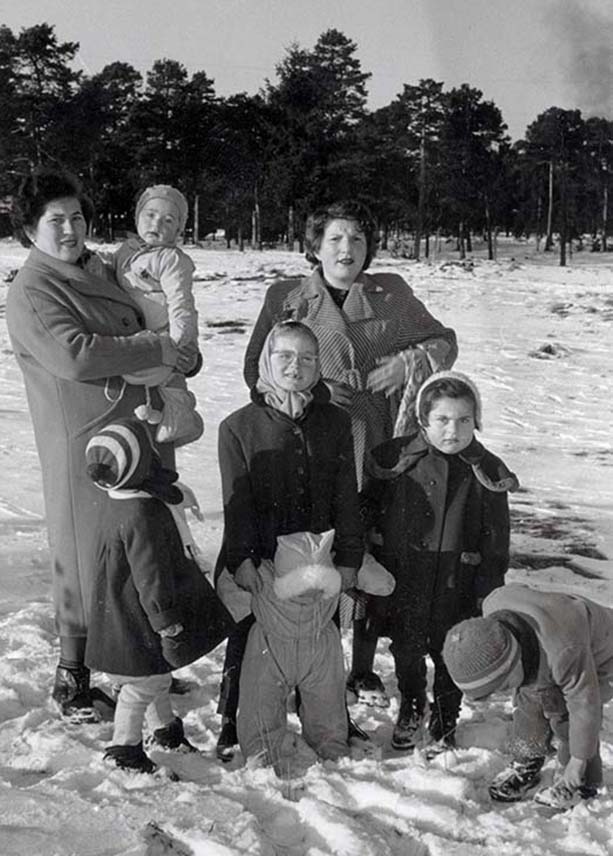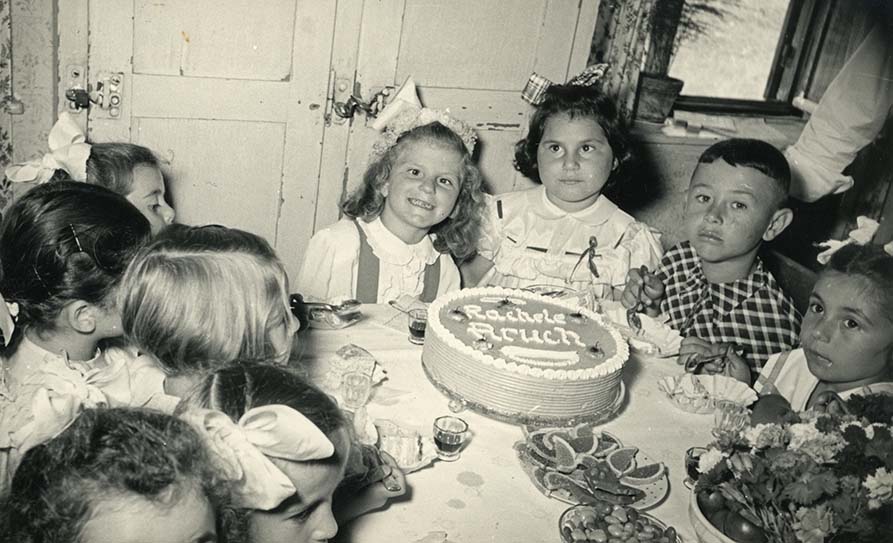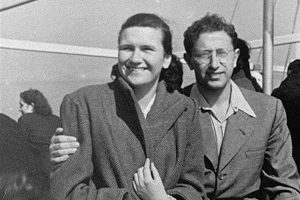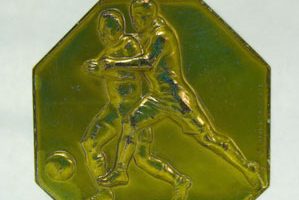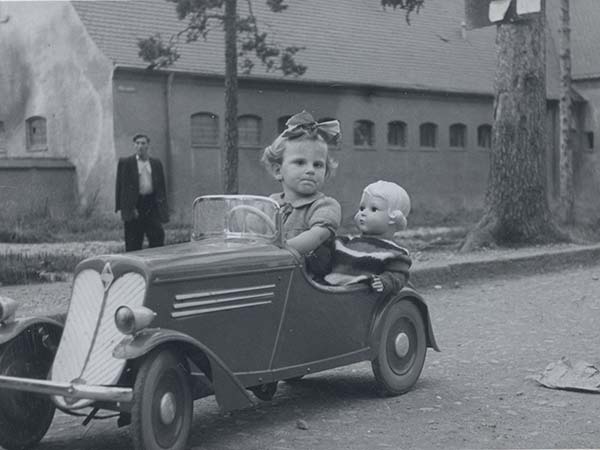
At Home in Feldafing
Family photos from the Feldafing DP camp
By late 1945, some 75,000 Jewish survivors of the Nazi horrors had crowded into the displaced persons (DP) camps that were hastily set up in Germany, Austria, and Italy. Conditions were abominable, with many subjected to antisemitism and hostile treatment. President Truman appointed Earl Harrison, dean of the University of Pennsylvania Law School, to go overseas to review the situation in the displaced persons camps. Joseph Schwartz, JDC’s European director, was invited to accompany him on his official tour of the camps. His landmark report called for separate Jewish camps and for UNRRA (United Nations Relief and Rehabilitation Administration) participation in administering them.
Thanks to his report, DP camps were set up throughout Europe specifically designed for Jewish survivors. Supplementing the relief supplied by the army, by UNRRA, and by UNRRA’s successor agency—the International Refugee Organization—JDC distributed supplies that nourished both body and soul in the DP camps: food, medicine, clothing, tools, equipment such as typewriters, and educational, cultural, and religious materials, including books, Torah scrolls, ritual articles, and holiday provisions. JDC funds supported medical facilities, schools, synagogues, and cultural activities, while JDC personnel helped organize communal life in many camps and other installations and represented the DPs before the military and other authorities.
A network of DP camps dotted Europe, full of survivors who were trying to restart their lives. Families were started, holidays celebrated, and school was in session. Our galleries from the World War II era document this life that began anew. We have a plethora of World War II era images, but we are always grateful to receive new images that record the daily life of survivors in the DP camps.
Recently, we received a cache of photos documenting life in the Foehrenwald and Feldafing DP camps from Rachele (Aruch) Bodner, whose parents, Beppo Aruch and Hanka Secemski, met in 1945 in the Feldafing DP camp. Her father was originally from Salonika, Greece, and her mother from Czenstehowa, Poland. They were married in March 1946 in Feldafing, and Rachele was subsequently born in Munich in 1948. Her brother Hymie followed in 1953. Together, the family lived in Feldafing and Foehrenwald from 1950 to 1956. Due to complications stemming from quotas, they lived in Israel from 1949 to 1950 and then returned to Germany until they ultimately immigrated to the United States in 1956, where they had another child named Abraham in 1958.
Rachele Aruch with her parents Beppo Aruch and Hanka Secemski in Feldafing DP camp, Germany, early 1950s.
Foehrenwald was the third-largest Jewish DP camp in the U.S. Zone, with a heavy concentration of children, while Feldafing was the first Jewish camp in the U.S. Zone and also quite large. Both camps had extensive educational, vocational, cultural, and religious programs organized and supported by JDC. Rachele’s family photos are important because they provide a more intimate look at life in the DP camps. Here, we don’t see vocational training or clothing distribution. Rather, we glimpse the daily grind of individual families marking birthdays with parties and participating in parades; parents attempting to build a normal life for their children. It is important for the JDC Archives to collect these photos in addition to photos that portray social services, in order to document a more complete representation of the experience of survivors in the DP camps.
Greek Jews from Salonika at the Feldafing DP Camp, Germany, late 1940s. Beppo Aruch can be seen blowing the horn in the photo at left.
Rachele’s family saved a treasure trove of images from their time in the DP camps. There are photographs of fellow Greek Jews from Salonika enjoying the great outdoors, as well as get-togethers with the extended family and friends.
Wintertime at Feldafing DP camp, Germany, early 1950s. Rachele holds her brother, who is clad in a snowsuit, while their mother stands behind them.
A photo snapped at Rachele’s birthday party shows her beautiful, personalized cake, while flags fly at a day of fun attending a parade. These are happy memories many of us can recall from our own childhoods, yet these particular moments happened within the DP camps of Europe among refugees. We are grateful to Rachele for sharing these memories with us and recognize the nuance they add to our photo database, which seeks to document JDC activities throughout the decades while simultaneously chronicling the lives of JDC aid recipients.
Rachele can identify her family members in the photographs, but sadly there are many faces that have gone unidentified. Did you have family or friends interned in the Feldafing DP camp? If so, please help us identify the people in these images. If your family would like to donate artifacts or photos connected to JDC’s work, please contact us at [email protected].
This story was shared with Rachele (Aruch) Bodner’s permission.
